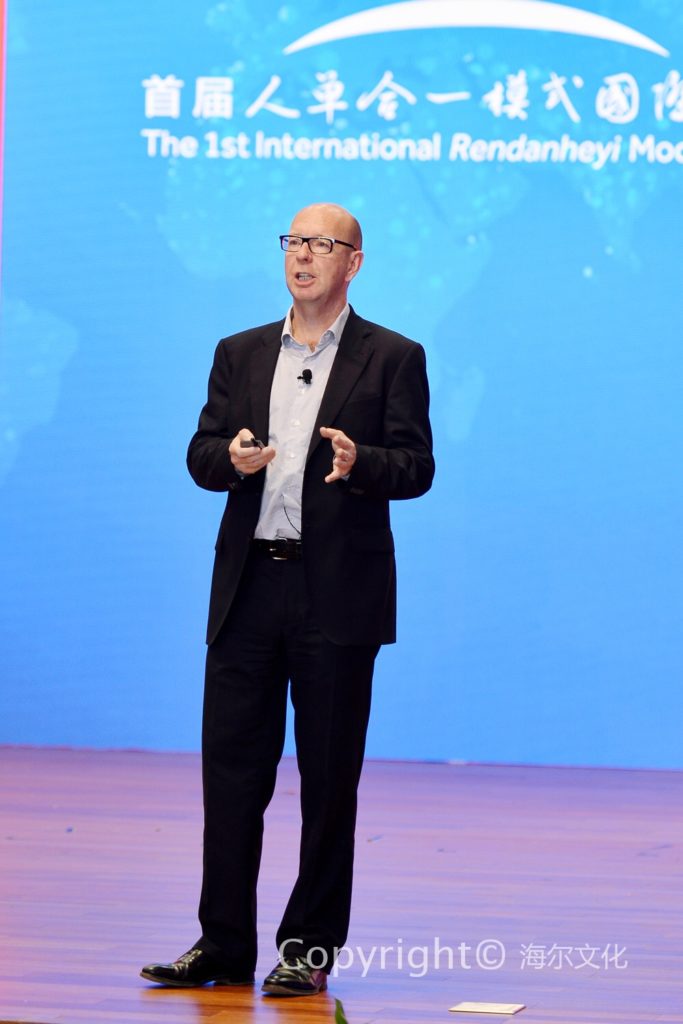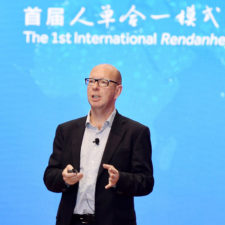 Stuart Crainer reports from the first International Rendanheyi Model Forum in Qingdao, China.
Stuart Crainer reports from the first International Rendanheyi Model Forum in Qingdao, China.
Another presentation about great companies and another mention of WL Gore. I have distant memories of WL Gore being held up as an exemplar of best management practice many years ago. Tom Peters venerated the company’s leadership and culture in the 1990s. Since then many others have enthusiastically endorsed Gore. Visiting the company has become something of a light industry. Thousands have now made the pilgrimage.
But have companies put the Gore ideas into practice? Perhaps some have but only a small number and only to a very limited degree. Suffice to say, they are not household names.
Similarly, the Chinese company Haier is now the subject of a huge amount of interest in its innovative management practices. Gurus and practitioners alike make the pilgrimage to the Chinese coastal city of Qingdao to learn more about zero distance to the consumer and Haier’s Rendanheyi model.
But even though the model has attracted international media coverage, a Harvard Business School case study and a steady succession of books (including Haier Purpose, published by Thinkers50) Rendanheyi has yet to be adopted by another large corporation.
So why does this happen time and time again? Why does best practice fail to make the leap into general practice?
First, there is a widespread belief that management is a pick and mix discipline. You don’t have to buy into the complete theory but can take a little bit of it and apply it to your company.
This has a big element of truth. Management is a magpie science, stealing great ideas from sociology, psychology, philosophy, military thinking and any other discipline it can.
But, when best practice is a well-articulated and comprehensive approach to running an organization, pick and mix doesn’t get you very far. All embracing organizational theories, such as Rendanheyi or Toyota’s lean production, are resistant to only a single element being extracted and implemented. Alone and isolated they tend to be somewhat empty experiences.
The second factor which prevents best practice becoming universal is that individuals and organizations continue to have little interest in instituting major change. They like to think of change as a programme or an initiative. In doing do, change is contained and constrained. Adopting an entirely different way of thinking and working is far from easy — something the employees of GE Appliances will be finding after the company was taken over by Haier in 2016 and the Chinese company slowly and sensitively began the process of educating its new employees in the Haier way.
Another element to this is that best practice is always history. You may make the pilgrimage to Google to discover how it innovates, but by the time you have returned home and briefed the troops, Google will have moved on. Best practice is always backward looking so, to embrace it, any organization has to build in a means of updating it.
The final obvious stumbling block is that in many instances trips to ogle at organizational best practice is merely corporate voyeurism. Executives enjoy the trip and then shake their heads, ‘I’m not sure it would work in Derby/Des Moines/Durban/Delhi, it is a whole lot more complicated and difficult here.’ They might be right, but the passive acceptance of mediocrity can never be a good thing whatever your business.
Stuart Crainer is co-founder of Thinkers50.


